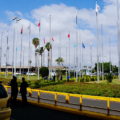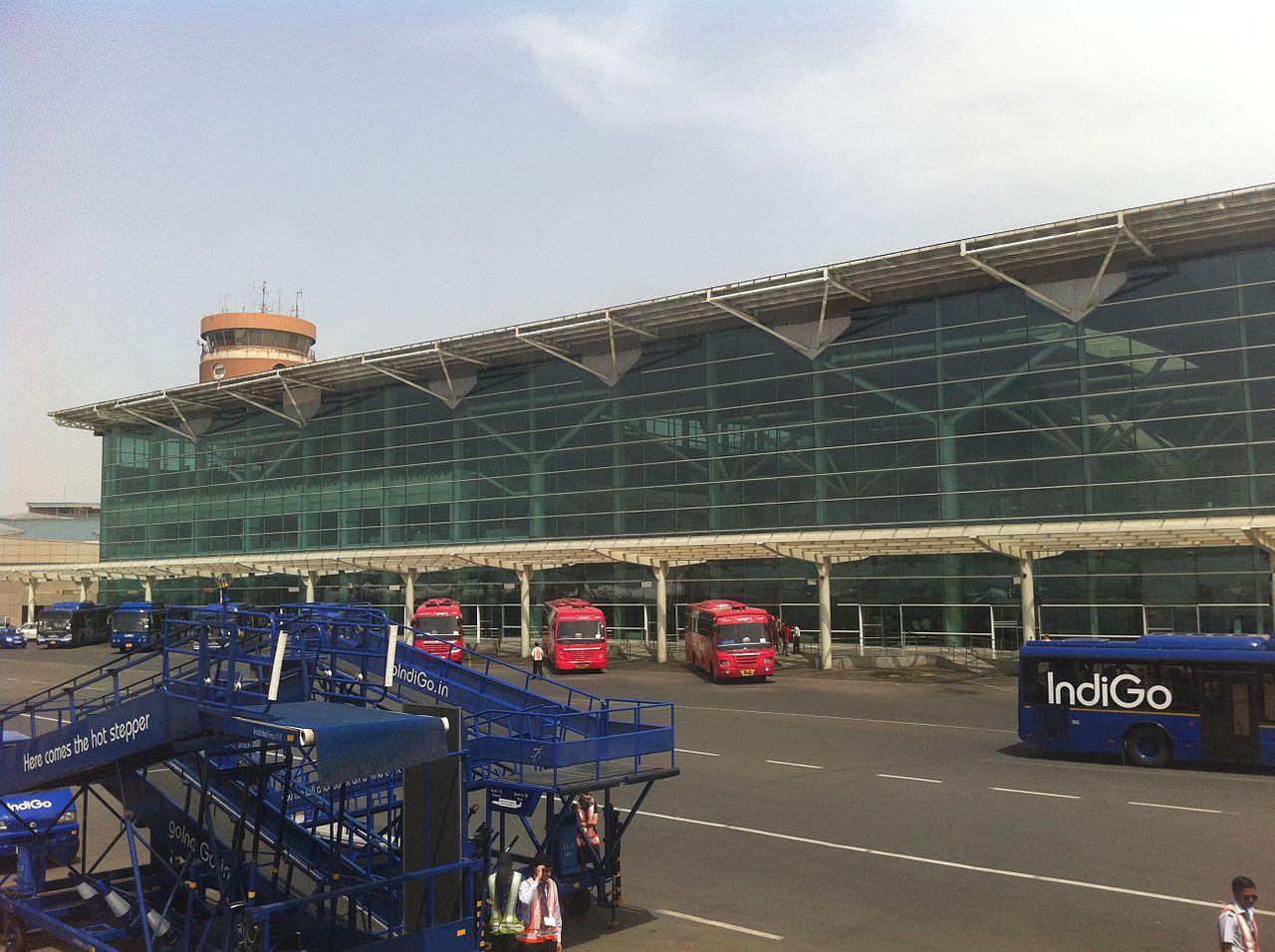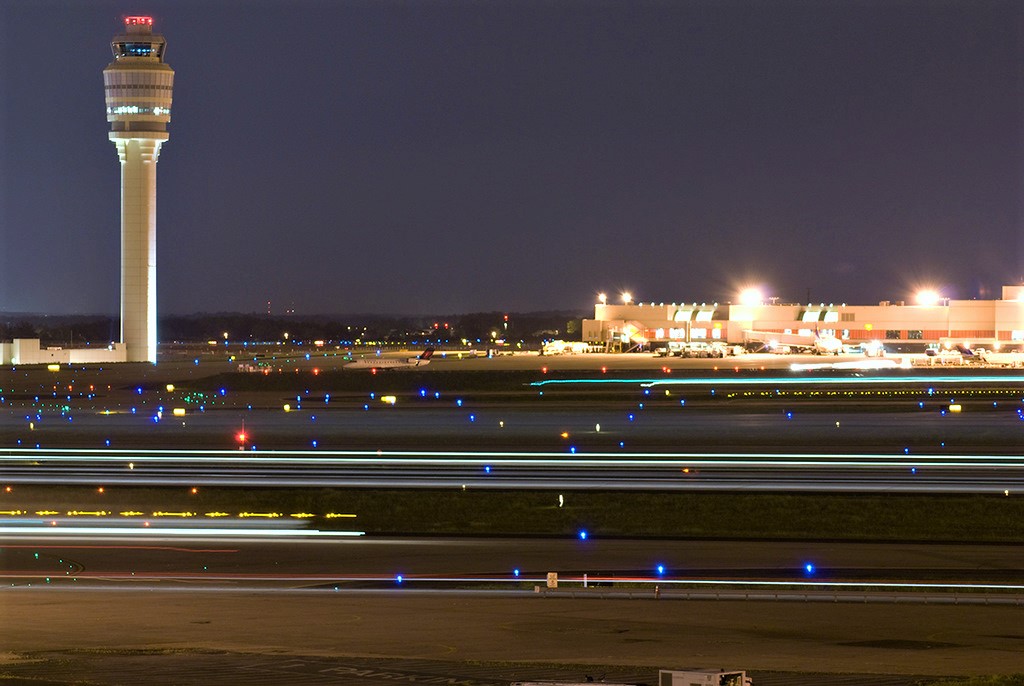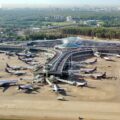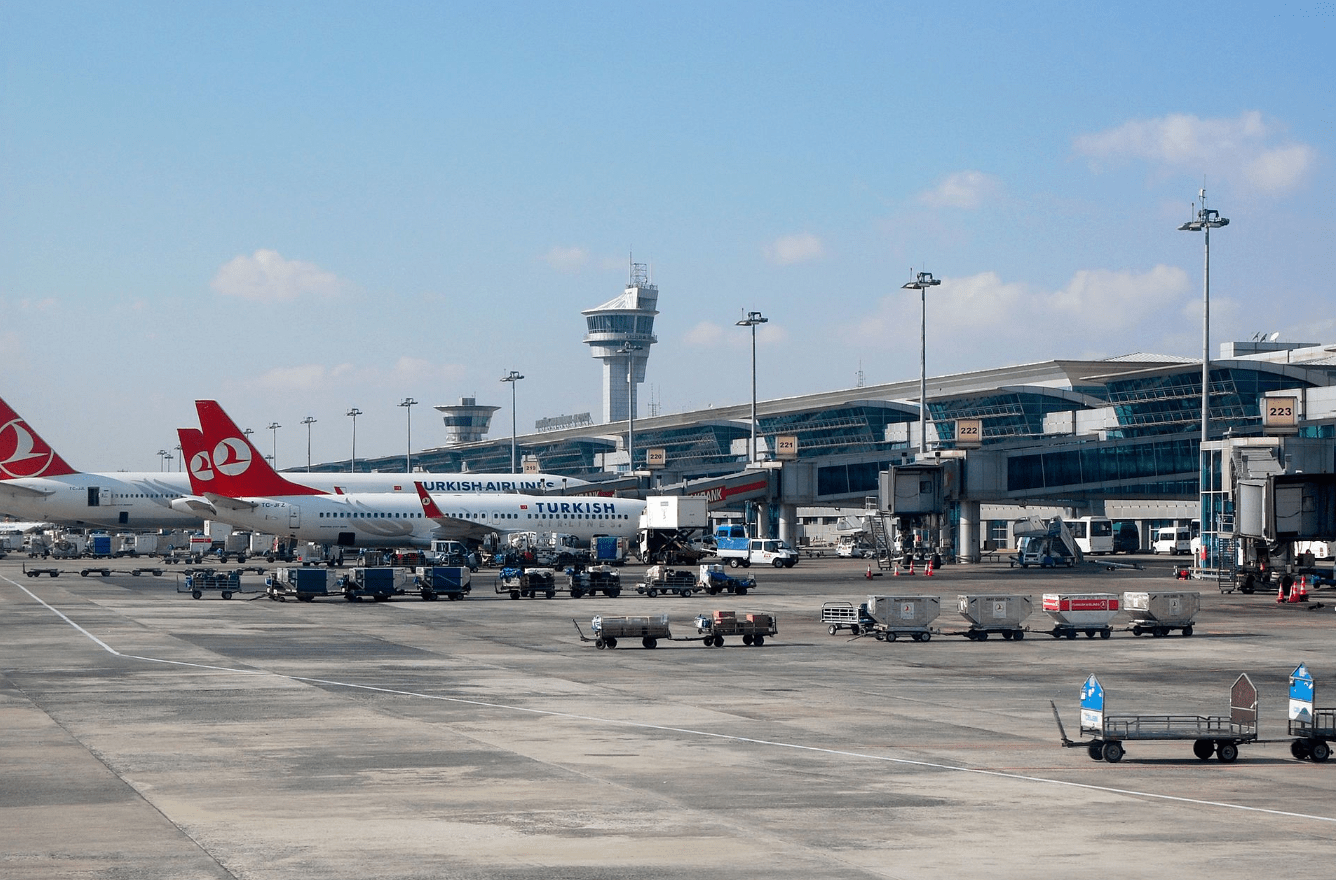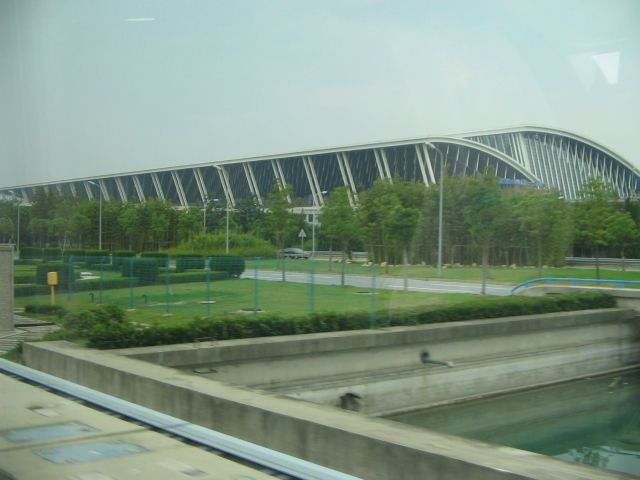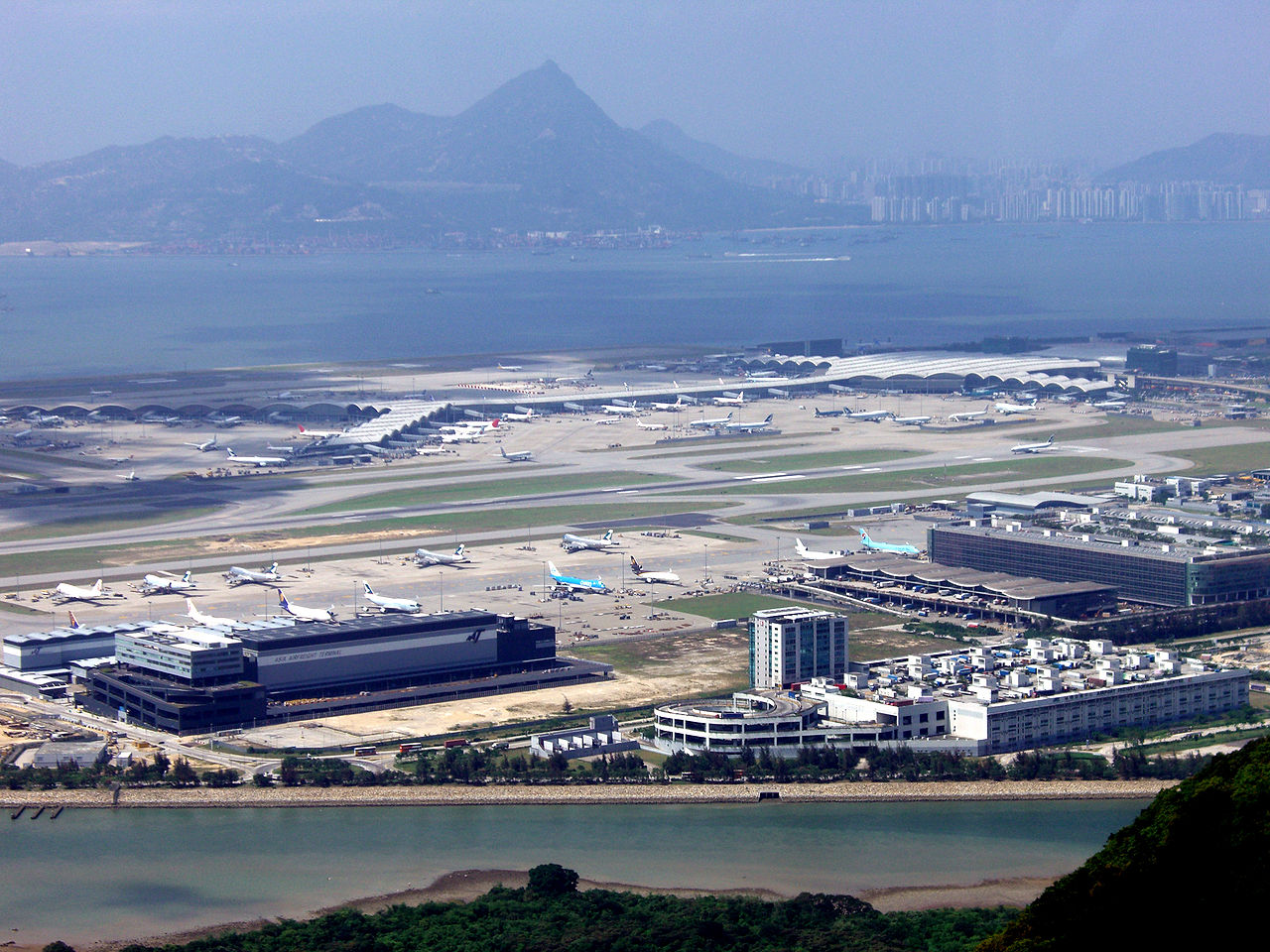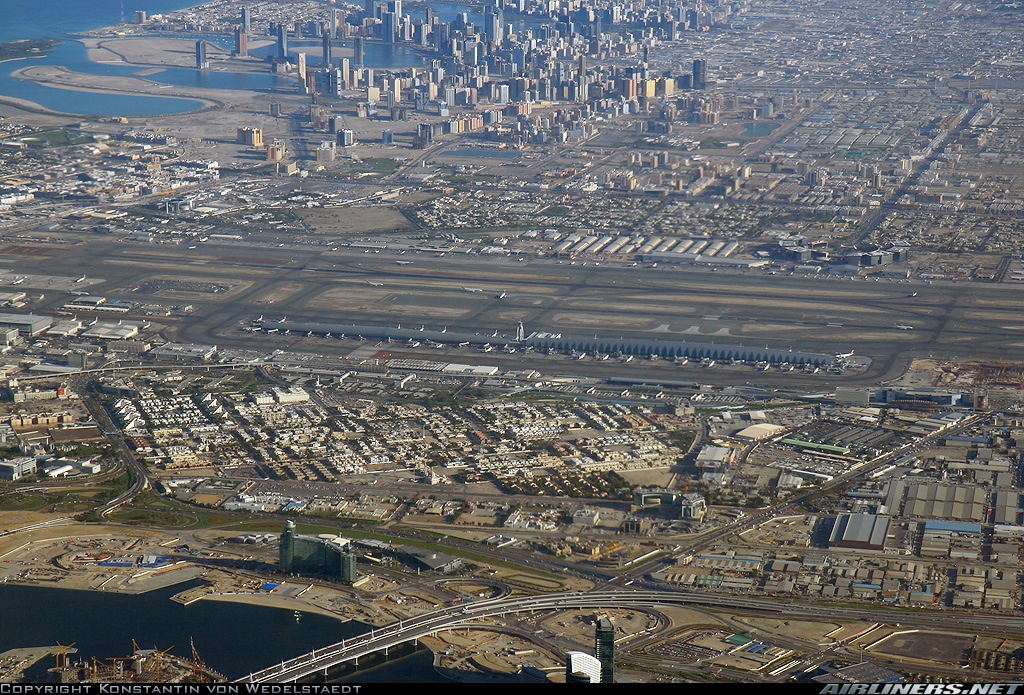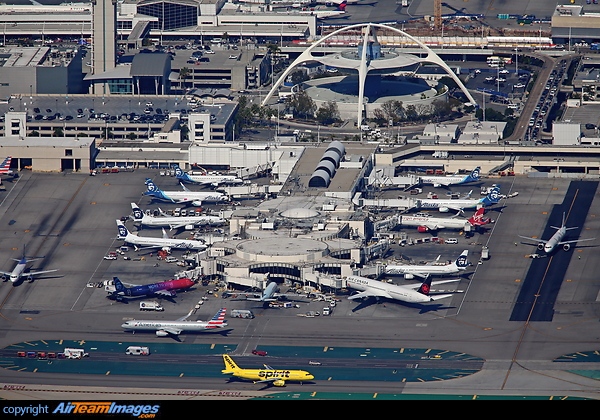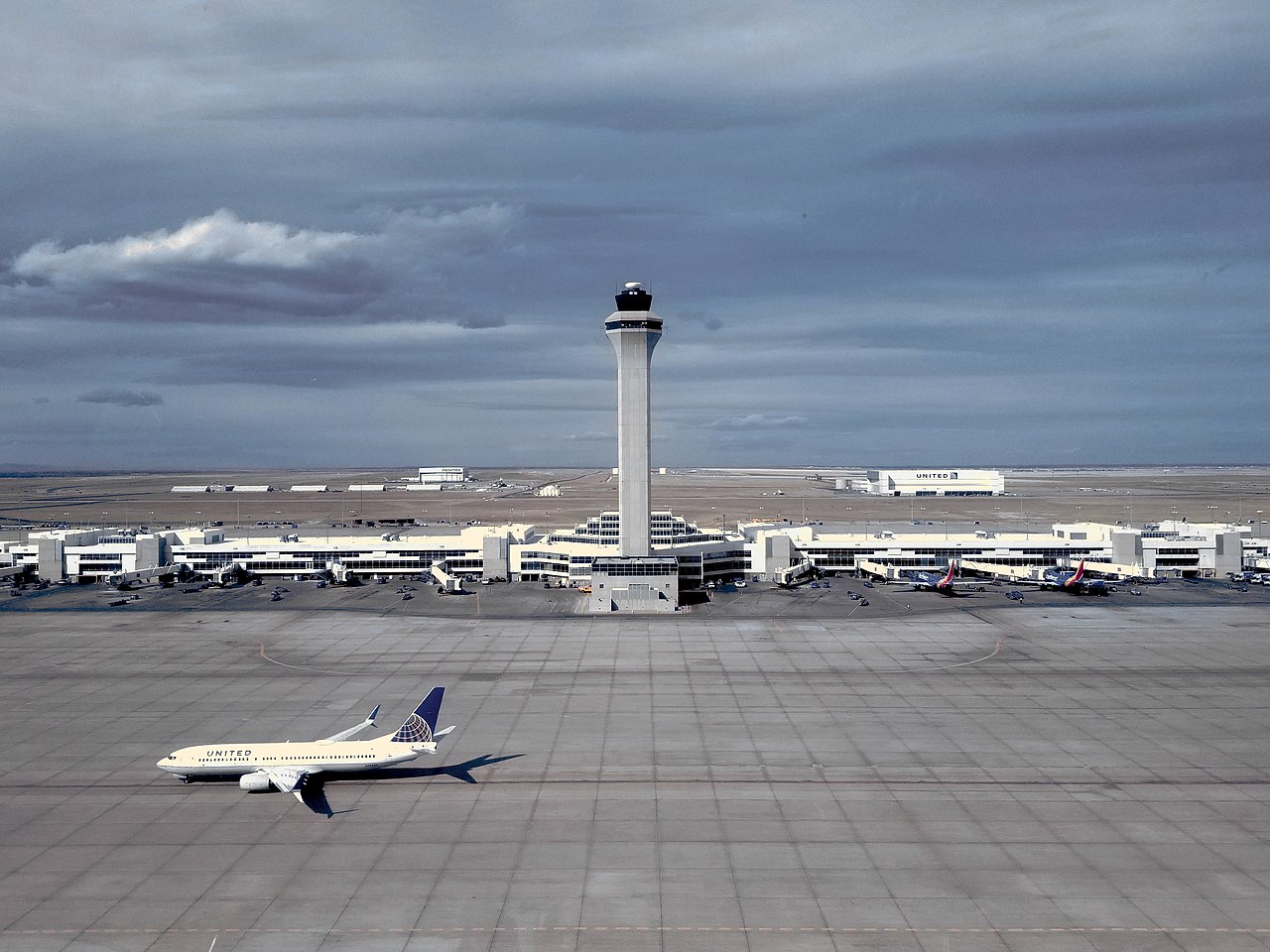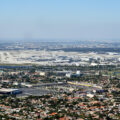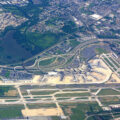Cairo International Airport
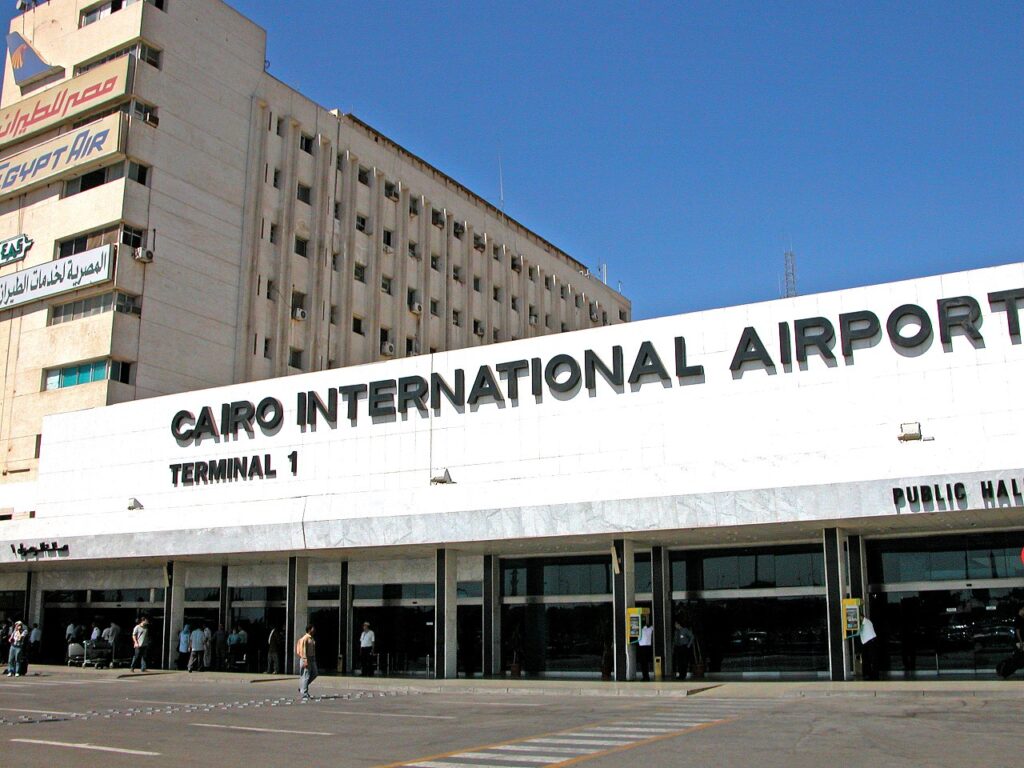
Source: Egypt-2A-006 – Cairo International Airport
| IATA: CAI ICAO: HECA | |
| Airport type | Public |
| Operator | Cairo Airport Company |
| Serves | Cairo, Egypt |
| Location | Heliopolis |
| Hub for | EgyptAir Nile Air |
| Elevation AMSL | 382 ft / 116 m |
| Coordinates | |
| Website | cairo-airport.com |
Cairo International Airport (IATA: CAI, ICAO: HECA) (Arabic: مطار القاهرة الدولي; Maṭār El Qāhira El Dawly) is the principal international airport of Cairo and the busiest airport in Egypt and serves as the primary hub for EgyptAir and Nile Air as well as several other airlines. The airport is located in Heliopolis, to the northeast of Cairo around 15 kilometres (9.3 mi) from the business area of the city and has an area of approximately 37 square kilometres (14 sq mi). It is the second busiest airport in Africa after OR Tambo International Airport in Johannesburg.

Terminal 1
Terminal 1 was originally used by EgyptAir and several Middle Eastern airlines. However, an increasing number of other foreign carriers, such as Air France and KLM transferred operations from Terminal 2 in 2006. In May 2009 EgyptAir moved all its operations to the new Terminal 3 (along with all Star Alliance airlines serving the airport). In March 2010, with the closure of Terminal 2 for major renovation works, all non-Star Alliance airlines serving the airport shifted operations to the terminal.
Departures and arrivals are with all airlines departing from Terminal 1 Hall 1, with the exception Saudia which is the sole tenant of Terminal 1 Hall 2 due to the size of their operations (SV accounted for 65% of Terminal 2’s traffic in 2009). Most international airlines arrive in Hall 3. Arrival Hall 2 was recently reopened and serves international and domestic arrivals.
The CAC has inaugurated the “Airport City Concept” to provide an array of services and entertainment facilities to travelers, airport visitors, as well as the general public. The first phase, a new shopping mall called the ‘AirMall,’ has been built near Terminal 1’s International Arrival Hall 3.
As of 2009 the facade of the terminal was being upgraded. A study on reorganizing the departure and arrival halls is ongoing as well as the feasibility study to include contact stands to improve the service and comfort levels to the passengers. Terminal 1 has 12 gates.
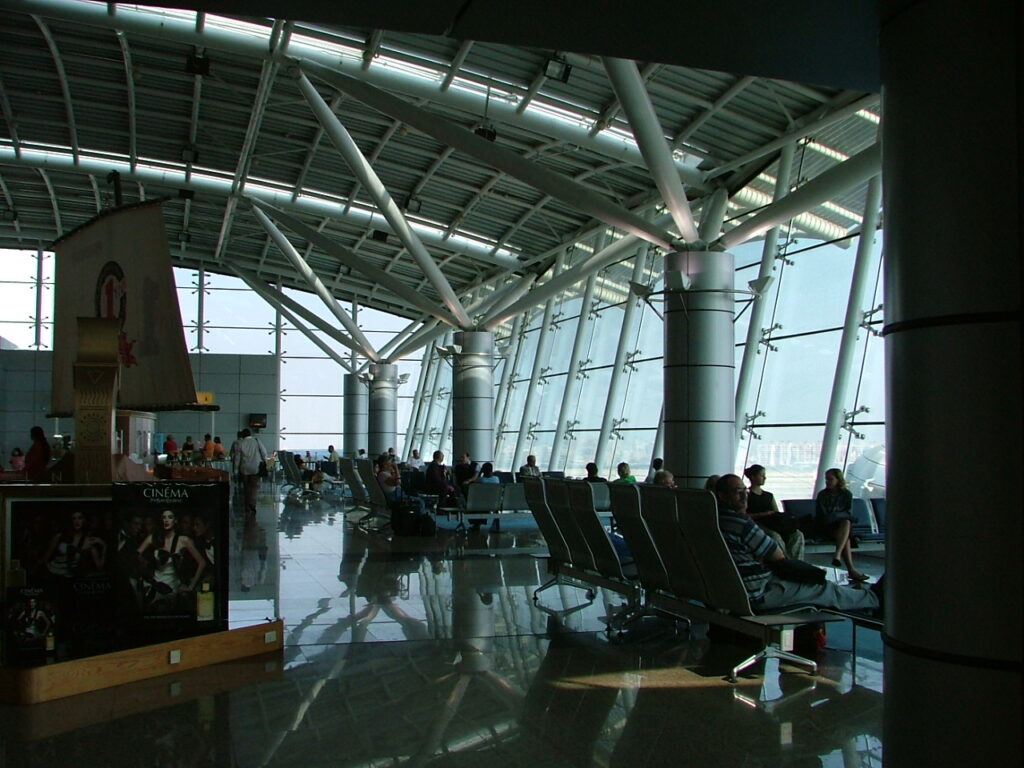
Source: Beebah
Hall 4
Terminal 1, Hall 4 is dedicated to private and executive jet services. Even though it is referred to as a ‘Hall’ under Terminal 1 it is operated independently from the commercial passenger terminal.
Smart Aviation Company has been based at the building since 2007; it moved to a new executive FBO in 2010 adjacent to Hall 4.
Terminal 2
Terminal 2 was inaugurated in 1986 with 7 boarding gates. It primarily served European, Gulf and East Asian airlines. The terminal was closed in April 2010 for complete renovations starting in 2012 and lasting 36 months. The architecture of the building limited the opportunities for further expansion which necessitated the entire building to be closed for major structural overhaul at an estimated cost of approximately $400 million.
In February 2010 the World Bank’s Board of Executive Directors approved a loan amount of $387 million to support the Cairo Airport Development Project (CADP) to overhaul the terminal with national banks providing the rest. The project aimed at increasing the terminal capacity from 3 million to 7.5 million passengers annually. The upgrade included the complete modernization of the 20-year-old facility to reach the same level of service as the new Terminal 3. In August 2011, Turkey’s Limak Holding won the tender for modernizing the terminal.
After several project delays, the renovated terminal had its soft opening on 28 September 2016 with a capacity of 7.5 million passengers bringing the airport’s total passenger capacity to 30 million passengers annually. The new terminal has 14 gates and an additional 5 remote stands.
During February 2017, Saudi Arabian Airlines launched its first international “Al-Fursan lounge” at Cairo International Airport Terminal 2. The 1,500 square-meter lounge can accommodate 300 people at a time.
The renovated terminal is operating jointly with Terminal 3 as one integrated terminal via an air bridge, thus, reinforcing the role of Cairo International Airport as a regional hub.
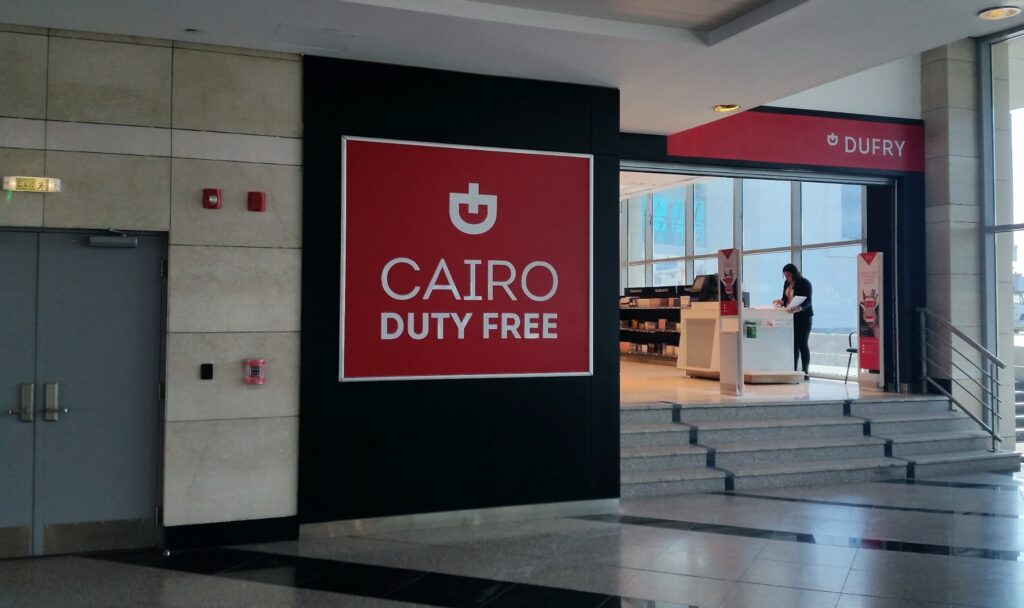
Source: Amsguc
Terminal 3
Given projected growth, and the limited ability to expand Terminal 2, the Egyptian Ministry of Civil Aviation began construction of Terminal 3 in 2004. The terminal was officially inaugurated on 18 December 2008 and opened for commercial operations on 27 April 2009. The facility is twice as large as the current two terminal buildings combined, with the capacity to handle 11 million passengers annually (6 million international and 5 million domestic) once the first phase is completed. It is adjacent to Terminal 2, and the two terminals are initially connected by a bridge.
With its hub at the airport, EgyptAir’s operations were overhauled with the full transfer of its operations (international and domestic) into the new terminal between 27 April and 15 June 2009. To implement the Star Alliance “Move Under One Roof” concept, all Alliance members serving the airport were relocated to the terminal by the first of August 2009.
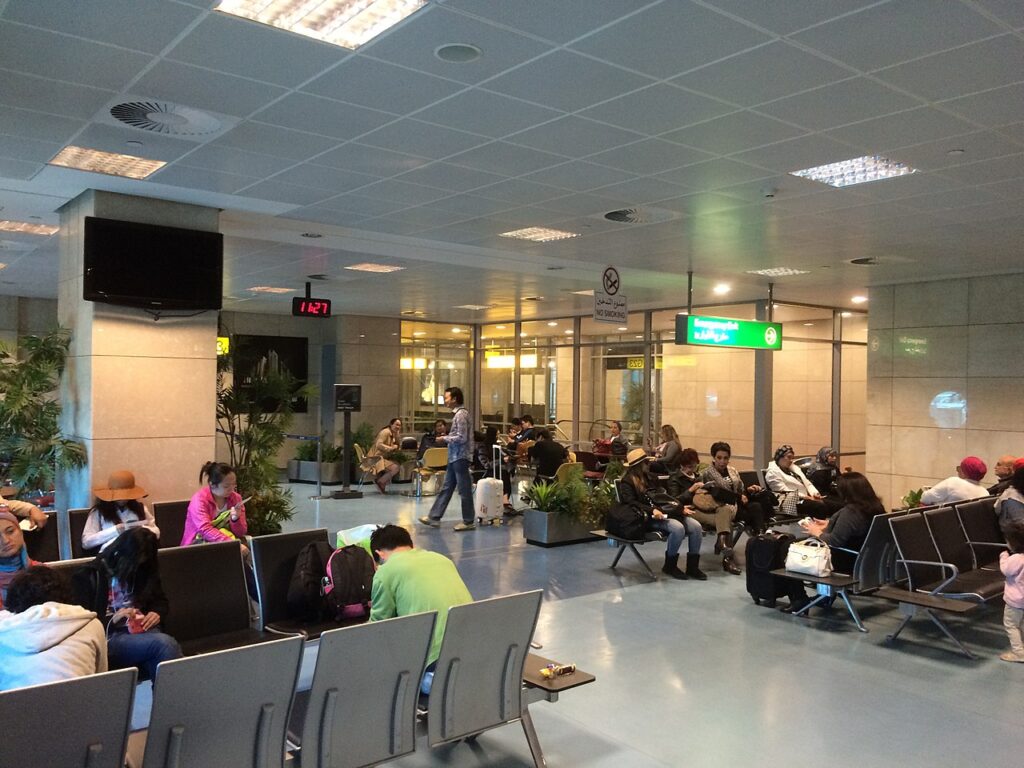
Source: Eassa
The new terminal includes:
- Two piers of extendable capacity and gates facilities serving domestic and international traffic on contact and remote stands. The main building and the piers are connected by concourses. Two of the gates are equipped to handle Airbus A380 aircraft. Provisions for a third pier are in the planning stages.
- Terminal 3 has 23 gates (2 gates for the A380), 6 check-in islands consisting of 110 check-in counters (plus 10 mobile counters and 10 CUSS kiosks), 76 immigration counters (plus 5 biometric gates), 52 contact and remote aircraft parking stands (5 with multiple uses), 425 FIDS, 15 public information points, 7 baggage carousels, 63 elevators, 50 moving walkways and 51 escalators.
- Retails space covers more than 5,000m2 (4.034m2 occupied by EgyptAir Tourism & Duty Free Shops).
- T3 Duty free areaInternational food court with Oriental, Asian and Western food (incl. Burger King, Hippopotamus, Upper Crust).
- Landside roads including bridges and fly-over serving the traffic to and from the terminal building, surface car park areas (multi-story parking garage capable of holding more than 3,000 cars), a new access road connecting the airport with the Autostrad road (Cairo ring road) and upgrading the access roads.
Seasonal flight terminal
On 20 September 2011 Prime Minister Sharaf inaugurated the new Seasonal Flights Terminal (ST), located west of Terminal 3. During the start-up phase EgyptAir operates its daily flight to Medina from the new Terminal. All Hajj traffic of EgyptAir will move to the ST while Saudia’s Hajj flights will still operate from Terminal 1. More destinations might be added during winter.
The terminal has an annual capacity of 3.2 million passengers with 27 check-in counters and 7 gates with a common gate and single security concept, the first in Cairo. It is designed to handle 1,200 passengers per hour. Passengers will be bussed to remote aircraft stands around Terminal 3. Its purpose is to ease operational strains on the existing terminals during pilgrim seasons.
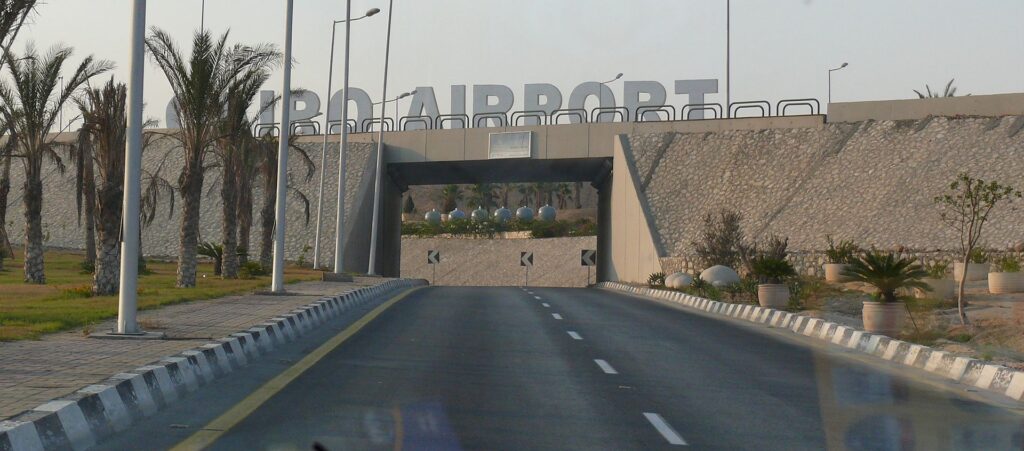
Source: Ad Meskens
Facilities
Overview
The airport has four terminals, the third (and largest) opened on 27 April 2009 and the Seasonal Flights Terminal opened on 20 September 2011. Terminal 2 was closed in April 2010 for major renovation works and was reopened on 28 September 2016. A third parallel runway replaced the crossing runway in 2010. Runway 05L/23R is 3,301 metres (10,830 ft) long, 05C/23C has a length of 4,000 metres (13,000 ft), and the new runway is designated as 05R/23L and is 3,999 metres (13,120 ft).
Terminal Transfer
The MiniMetro people mover links Terminal 1, the AirMall, the multi-storey car park and Terminals 2 and 3. The main station is located between Terminals 2 and 3 and is an integral part of the bridge connecting the two terminals. An air-cushioned 1.85 km (1.15 mi) system with top speed 50 km/h (31 mph) was designed and constructed by Leitner-Poma. EgyptAirAirbus A321-231 and Boeing 777-300ER at Cairo International AirportObelisk of Ramses II at Cairo Int. Airport
Airport Hotel
A luxury 350-room five-star Le Méridien hotel opened in front of Terminal 3 in December 2013. The hotel is linked to the terminal by a 230-metre-long (750 ft) skyway that is also equipped with a moving walkway.
Future developments
With the national carrier, EgyptAir, and the Egyptian authorities planning to develop the airport as a hub for the Middle East and Africa, the airport facilities are in constant development.
Several projects are underway, including:
- Construction of a multi-story car park located near Terminal 3.
- Continued upgrade of the land-side façade of Terminal 1.
- The Cairo Cargo City (CCC) will provide facilities to support the growth in cargo traffic through the airport.
- Expanding the Cairo Metro to serve the airport. The new line, Line 3, which is in an advanced stage of execution, will link Greater Cairo from east to west with the airport at one end, and Mohandessin district at the other. It is expected to be fully operational by 2019.
- Development of real estate and the ‘Oasis Project’ which entails a business park with company headquarters and regional offices.
- Construction of ‘Aerocity’, a family leisure park to be built within the airport’s investment zone. With an area of 3 square kilometres (1.2 sq mi), the enterprise should cost 1 billion Egyptian pounds (US$183 million) and will be carried out in two phases. The first phase will consist of the building of a business center, and the second, of an entertainment park following the guidelines of Disney World, in the United States. There will also be parks, artificial lake, game courts, a water park, 18 cinemas and several restaurants. This will be a new feature of Cairo Airport and forms part of the long-term development and modernization plan.
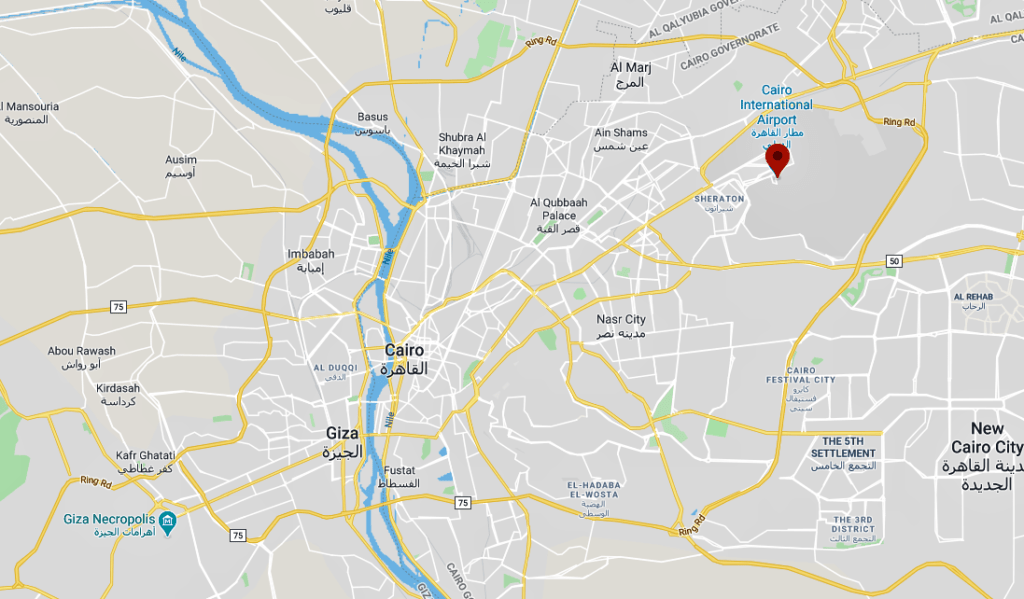
Airlines and destinations
Passenger
| Airlines | Destinations |
|---|---|
| Aegean Airlines | Athens |
| Aeroflot | Moscow–Sheremetyevo |
| Air Algérie | Algiers |
| Air Arabia | Ras al Khaimah, Sharjah |
| Air Arabia Egypt | Bergamo, Gassim, Sohag, Tabuk, Ta’if, Yanbu |
| Air Cairo | Aqaba, Aswan, Hurghada, Jeddah, Luxor, Sharm El Sheikh, Yanbu |
| Air France | Paris–Charles de Gaulle |
| Air Malta | Malta |
| Air Sinai | Tel Aviv |
| Alitalia | Rome–Fiumicino |
| AlMasria Universal Airlines | Jeddah, Kuwait, Yanbu Seasonal: Aswan, Bergamo, Hurghada, Luxor, Sharm El Sheikh |
| Asiana Airlines | Seasonal charter: Seoul–Incheon |
| Austrian Airlines | Vienna |
| Azerbaijan Airlines | Seasonal charter: Baku |
| Badr Airlines | Khartoum |
| British Airways | London–Heathrow |
| Bulgarian Air Charter | Seasonal charter: Sofia |
| EgyptAir | Abha, Abidjan, Abu Dhabi, Abuja, Abu Simbel, Accra, Addis Ababa, Alexandria–Borg el Arab, Algiers, Amman–Queen Alia, Amsterdam, Asmara, Assiut, Aswan, Athens, Baghdad, Bahrain, Bangkok–Suvarnabhumi, Barcelona, Beijing–Capital, Beirut, Berlin–Schönefeld, Brussels, Budapest, Casablanca, Copenhagen, Dammam, Dar es Salaam, Douala, Dubai–International, Dublin (begins 25 October 2020), Entebbe, Erbil, Frankfurt, Gassim, Geneva, Guangzhou, Hangzhou, Hong Kong, Hurghada, Istanbul, Jeddah, Johannesburg–OR Tambo, Juba, Kano, Khartoum, Kigali, Kuwait, Lagos, Larnaca, London–Heathrow, Luxor, Madrid, Marsa Alam, Medina, Milan–Malpensa, Moscow–Domodedovo, Mumbai, Munich, Muscat, Nairobi–Jomo Kenyatta, N’Djamena, New York–JFK, Paris–Charles de Gaulle, Riyadh, Rome–Fiumicino, Sharjah, Sharm El Sheikh, Sohag, Tokyo–Narita, Toronto–Pearson, Tunis, Vienna, Washington–Dulles Seasonal charter: Osaka–Kansai |
| Emirates | Dubai–International |
| Eritrean Airlines | Asmara, Khartoum, Milan–Malpensa |
| Ethiopian Airlines | Addis Ababa |
| Etihad Airways | Abu Dhabi |
| FlyBaghdad | Najaf |
| FlyEgypt | Aswan, Hurghada, Luxor, Marsa Alam, Sharm El Sheikh, Yanbu |
| Flynas | Abha, Dammam, Jeddah, Riyadh |
| Gulf Air | Bahrain |
| Iberia | Seasonal: Madrid |
| Iraqi Airways | Baghdad, Basra, Erbil, Sulaimaniyah |
| Jazeera Airways | Kuwait |
| Jordan Aviation | Amman–Queen Alia, Aqaba |
| Korean Air | Seasonal charter: Seoul-Incheon |
| Kuwait Airways | Kuwait |
| Lufthansa | Frankfurt, Munich |
| Middle East Airlines | Beirut, Jeddah |
| Nesma Airlines | Abha, Gassim, Jeddah, Tabuk, Ta’if, Yanbu |
| Nile Air | Abha, Al Ain, Al Jawf, Aswan, Baghdad, Basra, Gassim, Ha’il, Hofuf, Hurghada, Istanbul–Sabiha Gökçen, Jeddah, Jizan, Kuwait, Luxor, Port Sudan, Sharm El Sheikh, Sohag, Tabuk, Ta’if, Yanbu |
| Oman Air | Muscat |
| Petroleum Air Services | Charter: Abu Rudeis, Aswan, El Kharga, Hurghada, Luxor, Sharm El Sheikh Seasonal charter: Antalya, Aqaba, Paphos |
| Royal Air Maroc | Casablanca |
| Royal Jordanian | Amman–Queen Alia |
| Saudia | Abha, Dammam, Jeddah, Medina, Riyadh |
| SaudiGulf Airlines | Riyadh |
| Sichuan Airlines | Chengdu |
| Sudan Airways | Khartoum |
| Sun Air | Khartoum |
| Swiss International Air Lines | Zürich |
| Syrian Air | Damascus, Latakia |
| Tarco Airlines | Khartoum |
| TAROM | Bucharest |
| Tunisair | Tunis |
| Turkish Airlines | Istanbul |
| Ukraine International Airlines | Kiev–Boryspil |
| Yemenia | Aden, Seiyun |
Cargo
| Airlines | Destinations |
|---|---|
| Air France Cargo | Bangui, Paris–Charles de Gaulle, N’Djamena, Reunion |
| Cargolux | Beirut, Luxembourg |
| DHL International Aviation ME | Bahrain |
| EgyptAir Cargo | Cologne/Bonn, Istanbul–Atatürk, Milan–Malpensa, Ostend/Bruges, Sharjah |
| Emirates SkyCargo | Dubai–Al Maktoum, Frankfurt |
| Ethiopian Airlines Cargo | Addis Ababa, Beirut, Liège |
| Kalitta Air | Charleston |
| Lufthansa Cargo | Frankfurt, Hong Kong, Milan–Malpensa, Sharjah |
| Martinair | Amsterdam |
| RAM Cargo | Casablanca |
| Royal Jordanian Cargo | Amman–Queen Alia, Maastricht/Aachen |
| Turkish Cargo | Istanbul–Atatürk |
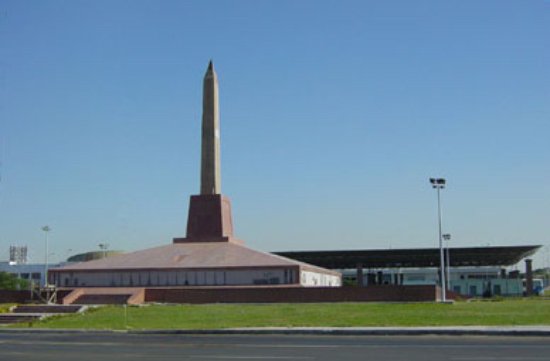
Source: Amr-hany
Ground transport
Limousines and shuttle buses
There are several ways to leave Cairo airport upon arrival. The most convenient way is by one of the numerous “limousine services”. Pick-up points are in front of the terminals (curb side). The prices are fixed depending on the destination and the car category, but different providers may charge wildly different prices. Category A are luxury limousines (e.g. Mercedes-Benz E-Class), Category B are Micro Buses for up to seven passengers, Category C are midsized cars (e.g. Mitsubishi Lancer) and new Category D are London Taxis.
Public transport
Public buses leave outside terminal 1 and connect frequently to transportation hubs like Abbasia and Tahrir Square but can be confusing for visitors and are not suitable for persons carrying large pieces of baggage. Line 3 of the Cairo Metro will connect the airport to Heliopolis, Central Cairo and Giza in the future. Intercity buses leave from the bus station located in between the terminals.
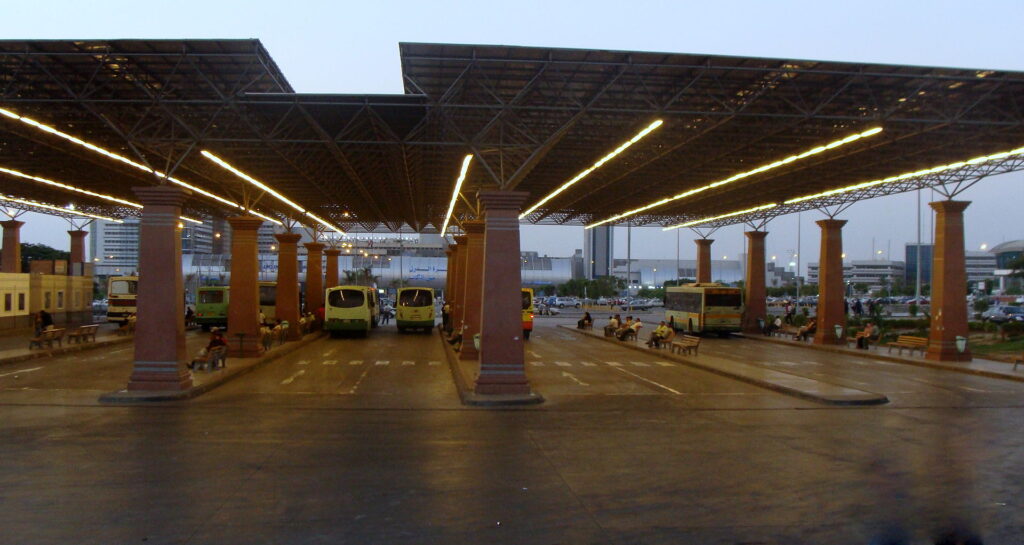
Source: Mo7amedsalim
Taxi
The taxis usually do not have a meter and prices are negotiated before travelling while the newer white taxis have meters, but will generally refuse to use it when leaving from the airport and charge significantly more.
Car
The airport can be reached via Oroba Road from Heliopolis or via the new road, connection Terminal 3 with the intersection between Ring Road and Suez Road. The toll for driving to the airport is EGP 15.
Accidents and incidents
- On 20 February 1956, a “Transports Aériens Intercontinentaux” Douglas DC-6B on a scheduled Saigon-Karachi-Cairo-Paris flight crashed on approach to Cairo airport, killing 52 of the 63 people on board.
- On 19 March 1965, Vickers Viscount YI-ACU of Iraqi Airways was damaged beyond economic repair when it ran into a number of lamp standards after a hydraulic system failure.
- On 20 May 1965, PIA Flight 705, a Boeing 720–040B, crashed on approach to Runway 34, killing 121.
- On 18 March 1966, United Arab Airlines Flight 749 crashed while attempting to land at Cairo International Airport. All 30 passengers and crew on board were killed.
- On 15 January 1968, Douglas DC-3 SU-AJG of United Arab Airlines departed on an international scheduled cargo flight to Beirut when the crew decided to return due to icing. The aircraft subsequently broke up in mid-air and crashed at Zifta, killing all four people on board. The cargo shifting in flight and the aircraft being 500 kilograms (1,100 lb) overloaded may have contributed to the accident.
- On 6 September 1970, Pan Am Flight 93, which was flying to New York City from Amsterdam, was hijacked and landed in Cairo after refueling and picking up another hijacker in Beirut. The Boeing 747-100 was blown up after everyone got out. The hijackers were arrested later.
Accolades
- 2010 – one of the three most improved airports by Skytrax World Airport Awards
- 2011 – second Best Airport in Africa of the Airport Service Quality Awards by Airports Council International
Source: wikipedia

